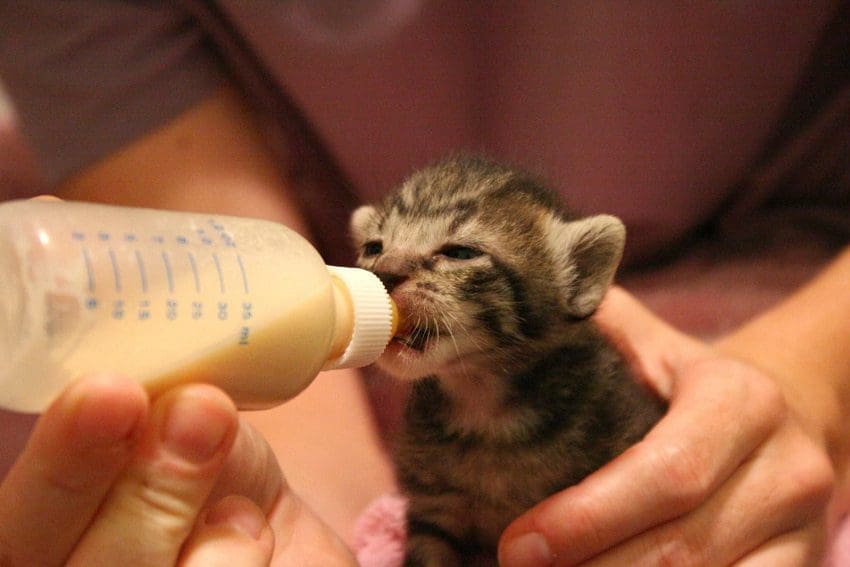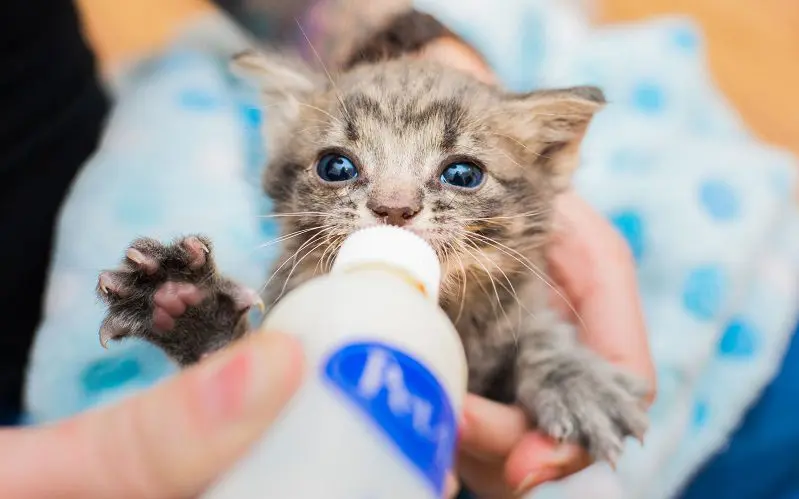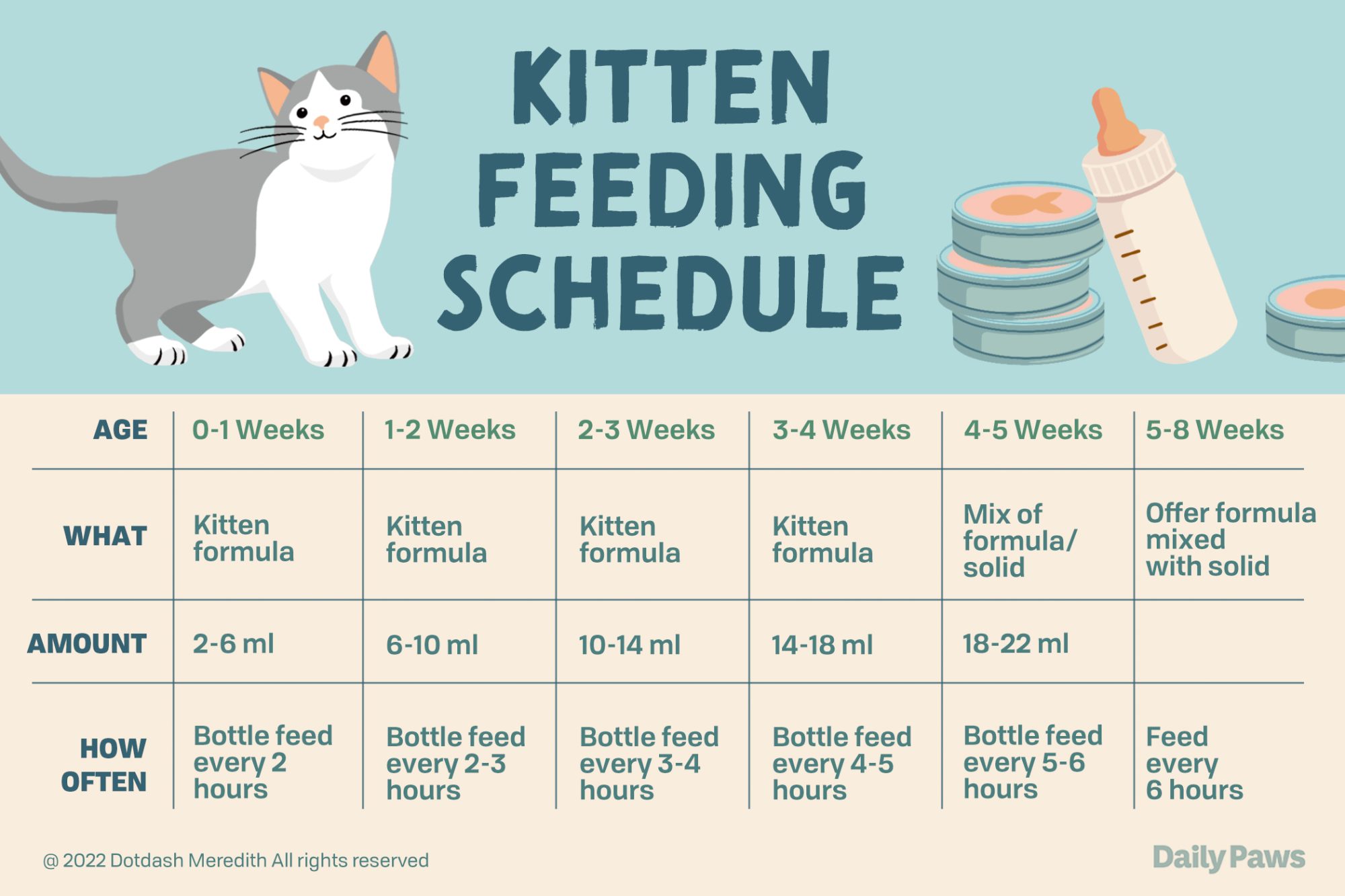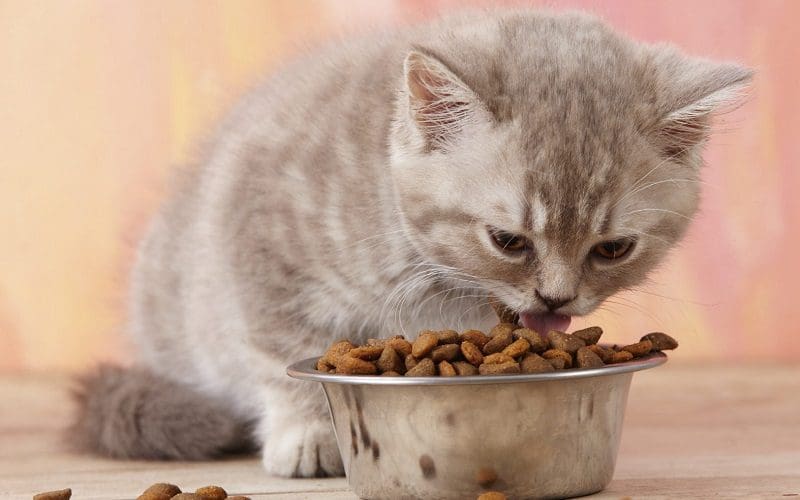Last Updated: 2 years ago
As a cat owner, you may find yourself in the position of needing to bottle feed a kitten.
Knowing how to bottle feed a kitten is essential for their health and well-being.
Bottle feeding is an important part of caring for kittens, and it can be a rewarding experience for both you and your pet.
So if you’re looking for tips on how to bottle feed a kitten, read on!
How to Choose the Right Bottle and Nipple Size

Learning how to bottle feed a kitten starts with choosing the right bottle and the correct nipple size.
Whether it is due to an orphaned or rejected litter or simply because your cat needs supplemental feeding, having the right equipment and supplies can make all the difference.
The proper feeding tool will help you know how to bottle feed a kitten successfully.
It will provide optimal nutrition levels through regular meals throughout each day whilst also ensuring comfort and safety at all times.
Following these simple steps should help ensure that you select just the right combination of bottle and nipple sizes.
1. Measure Your Kitten’s Mouth
Before purchasing any baby bottles or nipples, measure your kitten’s mouth with a ruler from the top lip to the bottom lip.
This will give you an idea of what size nipple would be best suited for them. Generally speaking, kittens up to 3 weeks old need a smaller nipple than those 4 weeks old and older.
2. Choose the Right Nipple Size
Once you have measured your kitten’s mouth width, use this measurement as a guide when selecting nipples from pet stores or online retailers.
If possible, try out different sizes before buying multiple nipples.
This can help you determine which one fits best in their mouths without causing discomfort or irritation while they are drinking kitten formula from it.
3. Check For A Proper Flow Rate
When choosing a nipple size for your kitten make sure that it has an appropriate flow rate.
Too slow means they won’t get enough kitten formula per feeding session. Too fast could cause choking if they aren’t able to swallow quickly enough.
To test this out at home, put some water into each type of nipple before making a purchase decision.
If it flows slowly, then go with something larger. But if there’s too much pressure coming out, then opt for something smaller instead.
4. Check For Comfortability
Make sure that when choosing a bottle and nipple size, both items fit comfortably in your hand while you are holding them during feeding sessions.
Otherwise, it could lead to wrist strain over time.
5. Choose A Durable Bottle And Nipple
Last but not least, pick durable materials such as plastic rather than glass, which might break easily.
Remember that the bottle can be dropped accidentally by either ourselves or our furry friends themselves during playtime activities around our homes.
Also, look out for BPA-free options so we don’t expose our little ones to unnecessarily harmful chemicals.
These chemicals are found in certain plastics used commonly today across many industries.
The Best Position for Bottle-Feeding Kittens

Knowing how to bottle feed a kitten entails learning feeding positions.
Bottle feeding can be tricky at first, but with the right technique and position, you can ensure that your kitten gets all the nutrition they need in a safe and comfortable manner.
Upright Position
The best position for bottle-feeding kittens is upright, with their head slightly higher than their body.
This will help prevent the formula from entering their lungs and causing aspiration pneumonia.
This is an infection caused by inhaling food or liquid into the lungs which can be fatal if not treated quickly enough.
Secure Grip
Ensure your kitten maintains a secure grip on the nipple while drinking to prevent choking on formula.
Additionally, check for excessive air intake during suckling to avoid potential gas pains or vomiting in the future.
To achieve this, try cradling them close against your chest while supporting their back legs gently with one hand.
Stability
Use two fingers of your other hand to hold onto either side of the nipple before giving it to them, so they have something stable to latch onto when drinking from it.
Always keep an eye out for signs of fatigue such as heavy eyelids or slow breathing after each feed as these may indicate that they are full.
This means they should stop eating now rather than continuing until all of the formula has been consumed.
This will help avoid overfeeding which can lead to health issues further down in life such as obesity or diabetes.
How Often Should You Feed a Newborn Kitten?

Newborn kittens need special attention and care in order for them to grow up healthy and strong.
One of the most important things that you must do as a responsible cat parent is to make sure they are getting enough nutrition.
It’s recommended that newborn kittens be fed every two to four hours around the clock until they reach four weeks old.
During this time, their tiny tummies can only hold small amounts of formula at one time. Frequent feedings are necessary for them to get all the nutrients they need from their meals.
To ensure that your kitten gets enough food during each feeding session, it’s best to give them free access to formula whenever possible instead of trying to measure out specific amounts each time.
When preparing formula for your kitten’s mealtime, always use room temperature water or kitten milk replacer. Never use cow’s milk as this could cause digestive issues in young cats due to its high lactose content.
Additionally, avoid adding any extra ingredients such as sugar or honey as these could also upset their stomachs.
This may lead to further health complications down the line if consumed regularly over an extended period of time.
If ever unsure about anything related specifically to caring for young felines please consult with a veterinarian first before taking any action.
Feeding a newborn kitten may seem daunting. But with patience and dedication, you can provide all the nourishment needed for him/her develop into adulthood successfully.
Weaning Kittens Off of Bottle Feeding

Knowing how to bottle feed a kitten is the first part of your journey. Weaning your cats off the bottle onto solid kitten foods is the next step.
Weaning kittens off of bottle feeding can be tricky but it’s important for their health and development that they learn how to eat properly from an early age.
The process should begin when your kitten is around 8 weeks old or when they weigh at least 2 pounds (900 grams).
Here are some tips on how to successfully transition your kitten from bottle feeding to eating solids:
- Start by introducing small amounts of wet kitten food into their diet while still providing regular bottle feeds throughout the day. This will help them get used to different textures and flavors as well as teach them how to chew and swallow properly.
- Gradually reduce the amount of kitten formula in each feed until you’re only giving them water with meals instead. This will help prepare their digestive system for digesting solids better than just switching straight away would do.
- Offer several small meals throughout the day rather than one large meal. This helps ensure that your kitten gets enough nutrition without overloading their tiny stomachs all at once which could lead to vomiting or diarrhea.
- Be patient. Transitioning from liquid diets takes time so don’t expect overnight success! It may take up to two weeks before your kitten has fully adjusted.
- Monitor closely. Watch out for any signs that something isn’t quite right such as vomiting, diarrhea, or body weight loss. These could indicate underlying issues which need addressing by a vet sooner rather than later.
Wrap-Up

Bottle-feeding a kitten is an important part of their early development and can be a rewarding experience for both you and your pet.
With the right preparation, equipment, and technique, you can learn how to bottle feed a kitten successfully.
Ensure you select the correct formula for your kitten’s age and choose an appropriate size bottle and nipple.
Hold them in the best position while they feed, ensuring you feed them frequently enough to keep up with their growth rate. As they get older, slowly wean them off of bottle-feeding.
Bottle-feeding a kitten requires dedication, but it can help ensure that they grow into healthy cats!
Resources:
